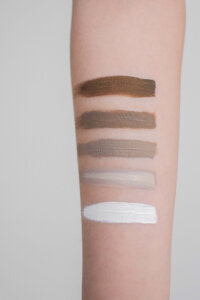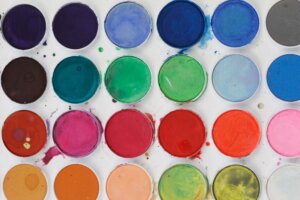Unveiling Your True Colors

Understanding your skin undertone is the key to unlocking a world of perfectly matched makeup and clothing colors that enhance your natural beauty. While many people focus on their skin tone, it’s the undertone that plays a crucial role in determining which colors truly flatter you. In this beauty blog, we will delve into the concept of skin undertones, explain how to identify yours, and provide tips on finding the perfect makeup and clothing colors to complement your undertone.
1. Understanding Skin Undertone:
Before we dive into finding the perfect colors, let’s understand what skin undertone actually means. Your skin undertone refers to the subtle hues beneath the surface of your skin. There are three main undertones: warm, cool, and neutral. Warm undertones have a yellow, peach, or golden hue, while cool undertones have more of a pink, blue, or red undertone. Neutral undertones have a balanced mix of warm and cool tones.
2. Identifying Your Undertone:
To determine your undertone, you can perform a few simple tests. The vein test is a popular method: examine the veins on your wrist in natural light. If they appear green, you likely have warm undertones. If they appear blue or purple, your undertones are cool. If you find it challenging to determine the dominant color, you may have a neutral undertone. Another way to identify your undertone is by observing how certain colors make your skin look. Warm undertones tend to look more flattering in earthy tones, gold, and warm neutrals, while cool undertones shine in jewel tones, silver, and cool neutrals.
3. Makeup for Warm Undertones:
If you have warm undertones, embrace shades that complement your golden hues. Opt for foundation and concealer with yellow or golden undertones. For blush and bronzer, go for warm peachy or coral shades that add a healthy flush to your skin. When it comes to eyeshadows, warm browns, bronzes, and coppery shades will bring out the warmth in your eyes. Lipstick shades in warm reds, oranges, and peachy nudes will complement your undertone beautifully.
4. Makeup for Cool Undertones:
For those with cool undertones, cool-toned makeup shades will be your best friends. Look for foundation and concealer with pink or neutral undertones. Blushes in rosy pinks or cool mauves will add a fresh pop of color to your complexion. When it comes to eyeshadows, opt for cool-toned purples, blues, and silvers to make your eyes pop. Lipsticks in berry shades, rosy pinks, and cool reds will flatter your undertone and complete your look.
5. Makeup for Neutral Undertones:
If you have a neutral undertone, consider yourself lucky! You can rock both warm and cool shades with ease. You can choose from a wide range of foundation shades that have a balanced mix of warm and cool undertones. Experiment with various blushes, eyeshadows, and lipsticks to find what suits your mood and style. Neutral undertones provide the flexibility to play with different colors and create a variety of looks.
6. Clothing Colors:
The same principles of undertones apply when it comes to selecting clothing colors. For warm undertones, earthy tones like olive green, burnt orange, and warm browns will bring out your natural glow. Cool undertones shine in jewel tones such as emerald green, royal blue, and deep purples. Neutral undertones can experiment with a wide range of colors, from pastels to bold shades, depending on personal preference.

Conclusion:
Decoding your skin undertone is a game-changer in finding the perfect makeup and clothing colors that enhance your natural beauty. Understanding whether you have warm, cool, or neutral undertones allows you to select shades that complement and harmonize with your complexion. So, embrace your undertone, experiment with different colors, and let your true beauty shine through with the power of perfectly matched makeup and clothing.

